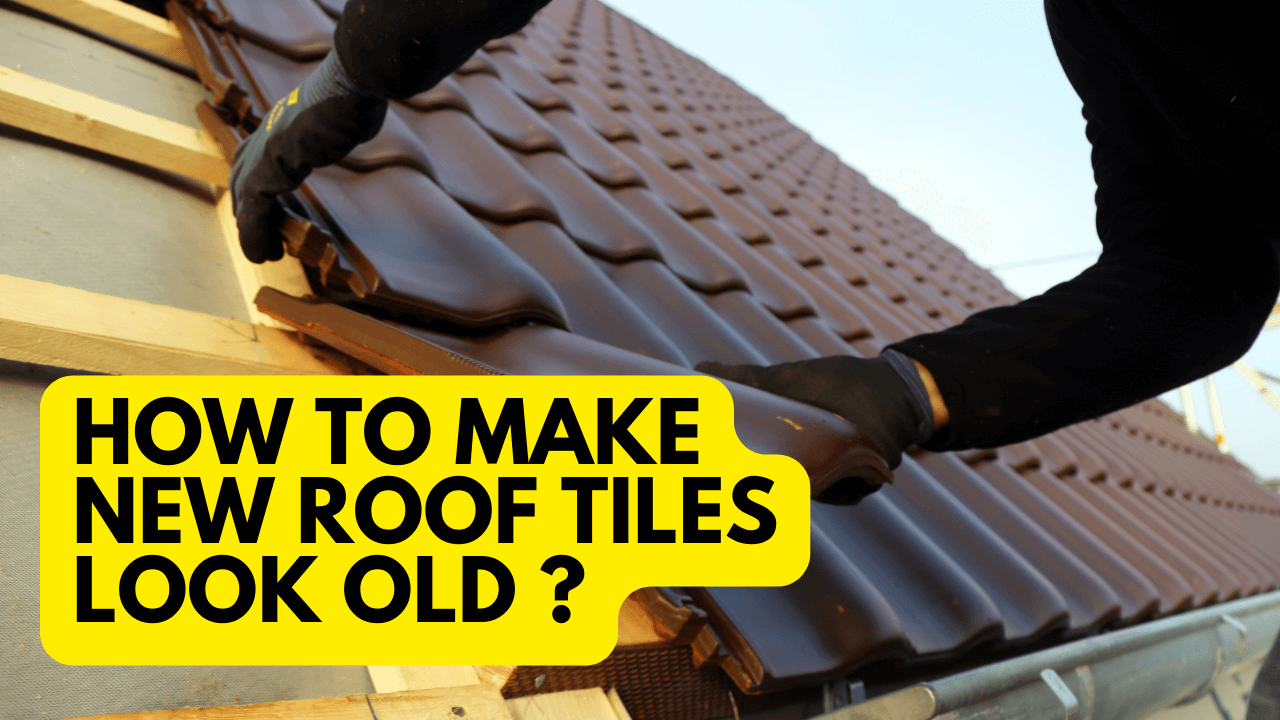Tiles of the same color and finish obtained from the same source should match completely, but they will not be identical because of tiny differences in ingredients or manufacturing temperatures. Acid rain and other contaminants have weathered the old tiles for many years.
The roof is frequently the first feature of a home that is noticed. As we approach, we determine the value of a structure based on its state, whether it is properly cared for and maintained or in need of repair.
A roof’s visual appeal is significant, even if it is completely functional and watertight. We instinctively devalue a building’s worth if it has been patched or enlarged at some point.
This is so true that, in many circumstances, when an extension is planned, a skilled roofer will advise the owner to remove the old tiles from the existing property’s back elevation and re-install them on the front elevation of the new addition, making the new work less noticeable to passers-by.
Table of Contents
Identify The Color And Finish Of Your Roof’s Tiles
It should be feasible to determine the color and quality of the tile by looking at the area covered by the headlap. By looking for a mark, name, or registered design number on the back of the tile, you can figure out who made it. This number will not provide you with a color reference, but it will tell you about the tile’s design and estimated age.
Inkjet inscriptions on most modern tiles identify batch information and the location and date of manufacture. A roofing or salvage dealer may be able to help you find used tiles. Second-hand tiles will appear aged, but they may still look off since they were installed on a different facing roof slope with more or less moss growth.
Power Wash The Tiles
Power washing the roof to get rid of moss, lichen, and algae is another alternative. However, especially if the tiles were granular-faced, this may have a patchwork appearance. Acidity levels will have been higher where lichen has grown, leading the cement slurry to dissolve faster and granule loss to be larger.
Water and debris can be forced further under the tiles by power cleaning, or it can be pushed onto the underlay, where it will cause a problem later. At worst, water squeezed through laps and interlocks will run down the underlay, perhaps leaking into the roof through holes in the underlay or a lack of tilt fillet below the fascia board.
Removing, cleaning, and re-fixing roof tiles is a safe and thorough technique to clean the debris. If you suspect the tiles are composed of asbestos-containing materials, it’s probably best to leave them alone and see an asbestos removal professional.
Install A Large Zinc Ridge
It could be a good idea to treat the roof at this point to prevent moss and lichen from returning. This can be accomplished in one of three ways: install a massive copper, zinc, or lead flashing along all ridges and hips, and a deposit of copper or lead oxide will drip down the roof, poisoning moss or lichen after a rain shower.
The area adjacent to the ridge or hip will be protected if the flashing is not large enough. If water runoff is collected for watering plants or residential usage, this method may not be the best choice.
A biocide solution might be sprayed on the roof on a dry day as an alternative. It should be safe for the next ten years with this. A strong horticultural or agricultural disinfectant, according to my sources, is equally as effective.
Paint With A Pigmented Paint
Some customers may be tempted to request that the roof be repainted with a pigmented coating to bring it back to its original color. While this may make the new and old tiles appear the same, it often leaves a patchy appearance due to a lack of quality control during the application, which is difficult to do in the open air.
They, like other coatings, do not persist indefinitely. They will be harmed by the environment and will begin to deteriorate within a few years, possibly worsening their appearance. In addition, a build-up of the coating in the interlocks and laps can obstruct the roof system’s free drainage, especially if they haven’t been fully cleaned.
Add Fertilizers Or Nutrients To The New Tiles
Another option is to treat the new portion of the roof with fertilizer, which will encourage the growth of moss to match the old section. Skimmed milk, liquid tomato fertilizer, or liquid cow manure could be used as a nutrient.
The liquid cow manure alternative is less expensive, but it may tint the entire roof brown for a short time and has a strong odor. The coating should be thick enough to cover the roof but not so thick that it congeals in the joints and interlocks, where it could cause more harm than good.
Use Salvaged Tiles
To keep the new or old appearance of the roof, it may be best to strip a piece of the current roof and use the good salvaged tiles to cover the remainder of one elevation while installing completely new tiles on one or more whole elevations.
This also has the advantage of preserving a portion of the roof’s tile manufacturer’s warranty, as putting new tiles alongside old tiles may void the warranty, especially if the tile design has evolved and is no longer backward compatible.
Thorough mixing of clay plain tiles can result in a beautifully random, mottled appearance, but the tiles must all be of the same type, ideally from the same manufacturer, to do this properly.
Combining handcrafted double camber tiles with single camber machine manufactured tiles might result in a disheveled appearance. Regardless of the approach used, due to the gradual accumulation and influence of atmospheric pollution, all roof areas should be nearly indistinguishable within ten years.





